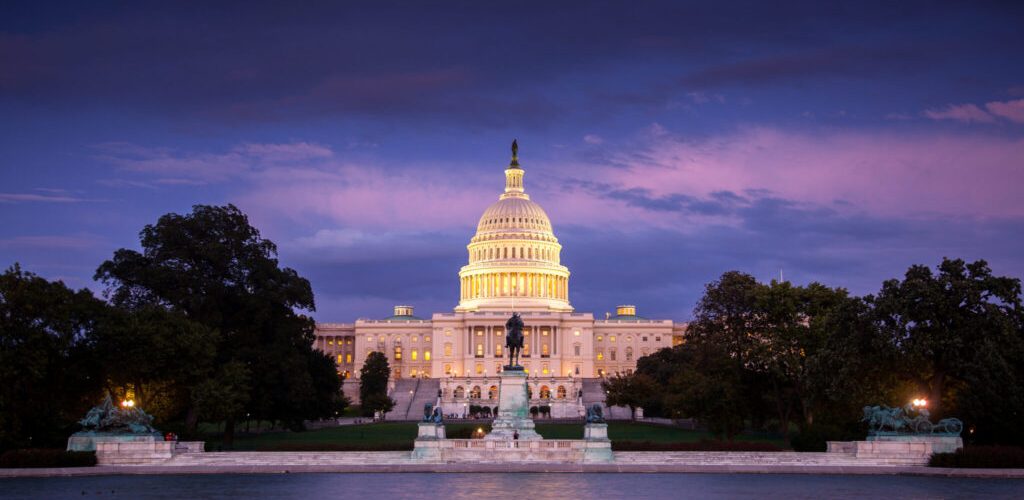The United States Senate returned to work on Tuesday following its August recess. The House returns next week. Job 1 for Congress in September is to negotiate a spending package to keep the federal government operational before the new fiscal year starts October 1. But arriving at a deal that the Democrat-controlled Senate, Republican-controlled House, and the White House can agree on will be no easy task.
Here’s an explainer of where things sit:
Appropriations: The House and Senate Appropriations Committees are responsible for hashing out government agencies’ spending levels each fiscal year. The committees divide their work into 12 subcommittees, which produce bills for their subject areas that are sent onto the full committees and, eventually, a vote of the entire House or Senate.
House subcommittees in 2023 have completed work on all 12 of their bills. Ten have passed the full committee. The Senate has bypassed the subcommittee process, starting bills at the full committee level, and passing all 12.
Only one bill has been passed by a full legislative chamber. The House on July 27 by a 219-211 vote passed the Military Construction and Veterans Affairs bill.
After each chamber passes a spending bill, the bill is supposed to be reconciled with its counterpart bill in the opposite chamber in a conference committee. This step in the regular order of legislative procedure has become incredibly rare
Omnibus: Instead of following the process that was in your high school civics book, Congress has increasingly relied on omnibus bills to keep the government funded. An omnibus bill lumps all spending for the entire federal government into one bill, making it impossible for any elected representative or senator – never mind constituents – to be fully familiar with the entire bill’s contents.
Minibus: A slightly less unwieldy version of an omnibus, a minibus contains funding for several departments and agencies rather than the entire government. Passage of multiple minibuses has the same outcome as passage of a single omnibus.
Continuing resolution: When Congress and the White House are unable to complete the regular appropriations process before the annual September 30 deadline when previously established spending levels expire, they buy themselves time for further negotiation through passage of a continuing resolution, or a CR.
A continuing resolution maintains spending levels at their current level for an agreed upon period of time while negotiations between the executive and legislative branches continue. There is no interruption in government operations during a CR.
Government shutdown: If government funding lapses because congressional negotiators and the White House were unable to pass all 12 spending bills or an omnibus or minbuses before the fiscal year ends on September 30, portions of the federal government will cease operations. Non-essential federal employees are placed on unpaid leave for the duration of the shutdown. This includes workers in agencies and departments that rely on annual appropriations, such as national parks, museums, and some administrative offices.
Some services will continue – customs and border enforcement, for example – but those employees will work without pay. Back pay is usually included in whatever agreement Congress and the administration eventually reach.
Senate Majority Leader Chuck Schumer, D-N.Y., says he and Speaker of the House Kevin McCarthy, R-Calif., have spoken about the need to pass a CR, and the Office of Management and Budget is offering Congress technical assistance in preparing the necessary legislative language.
Members of the House Freedom Caucus, however, are saying they will oppose a CR and will force a shutdown unless their demands are met, which vary depending on the member, including impeachment proceedings against the president and the secretary of Homeland Security, consideration of an enforcement-only border security bill (H.R. 2), or dramatic cuts in government spending.
Faced with a bloc of fellow Republicans who are willing to shut down the government, McCarthy will have to rely on Democratic votes to pass a CR, just as he did earlier this year on the vote to raise the debt ceiling. A bipartisan deal comes with its own political consequences, however.
A Republican opponent of McCarthy could put forth a motion to vacate the chair, a parliamentary maneuver that would subject McCarthy’s speakership to a vote of the full House. Only a few Republicans would have to side with Democrats to remove McCarthy as speaker.
















Add comment